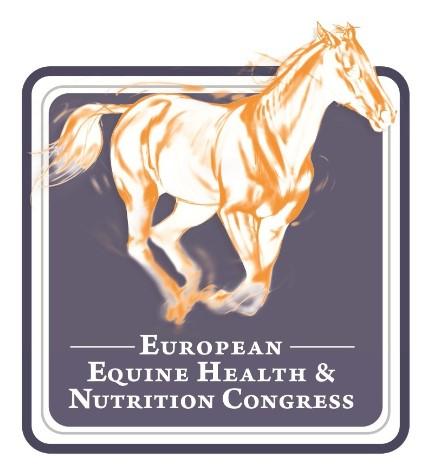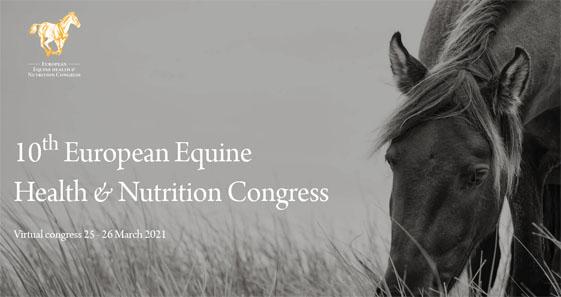Add to My Library
Would you like to add this to your library?
Get access to all handy features included in the IVIS website
- Get unlimited access to books, proceedings and journals.
- Get access to a global catalogue of meetings, on-site and online courses, webinars and educational videos.
- Bookmark your favorite articles in My Library for future reading.
- Save future meetings and courses in My Calendar and My e-Learning.
- Ask authors questions and read what others have to say.
Strategies relying on biological agents to prevent parasite infection
Author(s):
Updated:
FEB 09, 2023
Languages:
Add to My Library
Would you like to add this to your library?
Get access to all handy features included in the IVIS website
- Get unlimited access to books, proceedings and journals.
- Get access to a global catalogue of meetings, on-site and online courses, webinars and educational videos.
- Bookmark your favorite articles in My Library for future reading.
- Save future meetings and courses in My Calendar and My e-Learning.
- Ask authors questions and read what others have to say.
Read
Take home messages
Biological control
Biological control is defined as the use of living organisms to control pests.
- A natural enemy is introduced into the environment, or if already present, is stimulated to multiply to effectively reduce the number of pest agents.
- Different microorganisms frequently present in the soil are antagonists of parasite stages x Some viruses, bacteria, fungi and worms feed on cysts, eggs or larvae to obtain carbon and nitrogen.
- Other microorganisms feed on biological agents, which requires their regular administration.
Some filamentous saprophytic fungi have been successfully tested against parasites in the soil.
- Duddingtonia flagrans, Monacrosporium thaumasium and Arthrobotrys oligospora are trapping nematodes agents.
- Mucor circinelloides, Pochonia chlamydosporia and Trichoderma atrobrunneum are able to invade and destroy cysts and eggs of helminths or ticks. Fungi as biological agents to prevent parasite infection
Spores or mycelium are the main structures of fungal multiplication.
- Fungi reproduce asexually by fragmentation, budding, or producing spores.
A useful and practical way of spreading parasiticide fungi is required.
- Spores or mycelium can be sprayed directly on the soil/fecal pats.
- Certain fungi can resist the passage through the digestive tract and develop their antagonistic activity in the feces, where parasite stages are also present.
The oral administration of fungi offers a simple method that ensures their presence in the feces.
- Edible formulations are well suited for horses to receive adequate concentrations of spores of parasiticide fungi.
- The periodical administration of parasiticide fungi spores is advised to develop integrated programs to prevent infection by helminths in horses under pasturing regimes.
References
- Arias, M., Cazapal-Monteiro, C., Valderrábano, E., Miguélez, S., Rois, J. L., López-Arellano, M. E., Madeira de Carvalho, L. M., Mendoza de Gives, P., Sánchez-Andrade, R., and Paz-Silva, A., 2013. A preliminary study of the biological control of strongyles affecting equids in a zoological park. Journal of Equine Veterinary Science, 33 (12), 1115–1120. https://doi.org/10.1016/j.jevs.2013.04.013
- Canhão-Dias, M., Paz-Silva, A., and Madeira de Carvalho, L. M., 2020. The efficacy of predatory fungi on the control of gastrointestinal parasites in domestic and wild animals—A systematic review. Veterinary Parasitology, 283, 109173. https://doi.org/10.1016/j.vetpar.2020.109173
- Cazapal-Monteiro, C., Hernández, J. A., Arias, M. S., Suárez, J. L., Miguélez, S., Francisco, I., Lago, P., Rodriquez, M. I., Cortiñas, F. J., and Romasanta, A., 2014. Horse rearing conditions, health status and risk of sensitization to gastrointestinal parasites. In: Paz-Silva, A., Arias, M. S., SánchezAndrade, R., editors. Horses: breeding, health disorders and effects on performance and behaviour. New York: Nova Publishers, p. 73-92.
- Hernández, J. Á., Arroyo, F. L., Suárez, J., Cazapal-Monteiro, C. F., Romasanta, Á., López-Arellano, M. E., Pedreira, J., de Carvalho, L. M. M., Sánchez-Andrade, R., Arias, M. S., de Gives, P. M., and Paz-Silva, A., 2016. Feeding horses with industrially manufactured pellets with fungal spores to promote nematode integrated control. Veterinary Parasitology, 229, 37-44. https://doi.org/10.1016/j.vetpar.2016.09.014
- Hernández, J. Á., Sánchez-Andrade, R., Cazapal-Monteiro, C. F., Leonardo Arroyo, F., Sanchís, J. M., Paz-Silva, A., and Arias, M. S., 2018. A combined effort to avoid strongyle infection in horses in an oceanic climate region: rotational grazing and parasiticidal fungi. Parasites & Vectors, 11 (240). https://doi.org/10.1186/s13071-018-2827-3
- Kumar, N., Rao, T. K. S., Varghese, A., and Rathor, V. S., 2013. Internal parasite management in grazing livestock. Journal of Parasitic Diseases, 37, 151–157. https://doi.org/10.1007/s12639-012-0215- z
- Mendoza-de Gives, P., López-Arellano, M. E., Aguilar-Marcelino, L., Olazarán-Jenkins, S., ReyesGuerrero, D., Ramírez-Várgas, G., and Vega-Murillo, V. E., 2018. The nematophagous fungus Duddingtonia flagrans reduces the gastrointestinal parasitic nematode larvae population in faeces of orally treated calves maintained under tropical conditions-Dose/response assessment. Veterinary Parasitology, 263, 66-72. https://doi.org/10.1016/j.vetpar.2018.10.001
- Nielsen, M. K., Branan, M. A., Wiedenheft, A. M., Digianantonio, R., Scare, J. A., Bellaw, J. L., Garber, L. P., Kopral, C. A., Phillippi-Taylor, A. M., and Traub-Dargatz, J. L., 2018. Risk factors associated with strongylid egg count prevalence and abundance in the United States equine population. Veterinary Parasitology, 257, 58-68. https://doi.org/10.1016/j.vetpar.2018.05.006
- Saumell, C. A., Fernández, A. S., Echevarria, F., Gonçalves, I., Iglesias, L., Sagües, M. F., and Rodríguez, E. M., 2016. Lack of negative effects of the biological control agent Duddingtonia flagrans on soil nematodes and other nematophagous fungi. Journal of Helminthology, 90, 706-711. https://doi.org/10.1017/S0022149X1500098X
- Vieira, Í. S., Oliveira, I. C., Campos, A. K., and Araújo, J. V., 2020. Arthrobotrys cladodes and Pochonia chlamydosporia: Nematicidal effects of single and combined use after passage through cattle gastrointestinal tract. Experimental Parasitology, 218, 108005. https://doi.org/10.1016/j.exppara.2020.108005
Add to My Library
Would you like to add this to your library?
Get access to all handy features included in the IVIS website
- Get unlimited access to books, proceedings and journals.
- Get access to a global catalogue of meetings, on-site and online courses, webinars and educational videos.
- Bookmark your favorite articles in My Library for future reading.
- Save future meetings and courses in My Calendar and My e-Learning.
- Ask authors questions and read what others have to say.
About
How to reference this publication (Harvard system)?
Paz Silva, A. (2023) “Strategies relying on biological agents to prevent parasite infection”, EEHNC - Virtual Congress - 2021. Available at: https://www.ivis.org/library/eehnc/eehnc-virtual-congress-2021/strategies-relying-on-biological-agents-to-prevent-parasite-infection (Accessed: 04 June 2024).




Comments (0)
Ask the author
0 comments